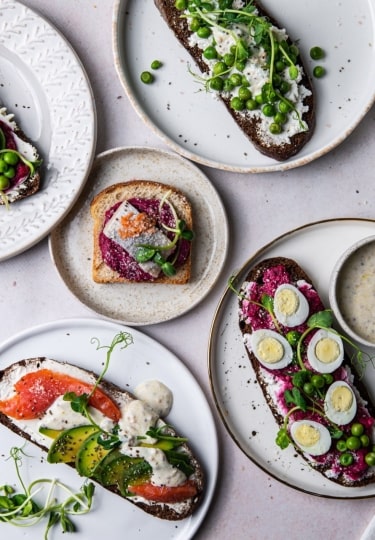Copenhagen food these days is most often associated with the upper echelons of the New Nordic fine dining movement. For well over a decade now, Noma and the whole ecosystem of restaurants run by René Redzepi’s former proteges have dominated the scene here.
While travelers absolutely can and should check out some of these spots, which tend to focus on small plates, natural wines, and hyper-local ingredients like reindeer meat and sea buckthorn, that’s no reason to ignore more traditional Danish delicacies.
When it comes to food in Copenhagen, expect to find impeccably sourced local ingredients and über-fresh seafood. From the humble smørrebrød to scrumptious pastries and pork roasts fit for a king, there are all sorts of reasons to come to this cosmopolitan capital hungry.
Pickled Herring
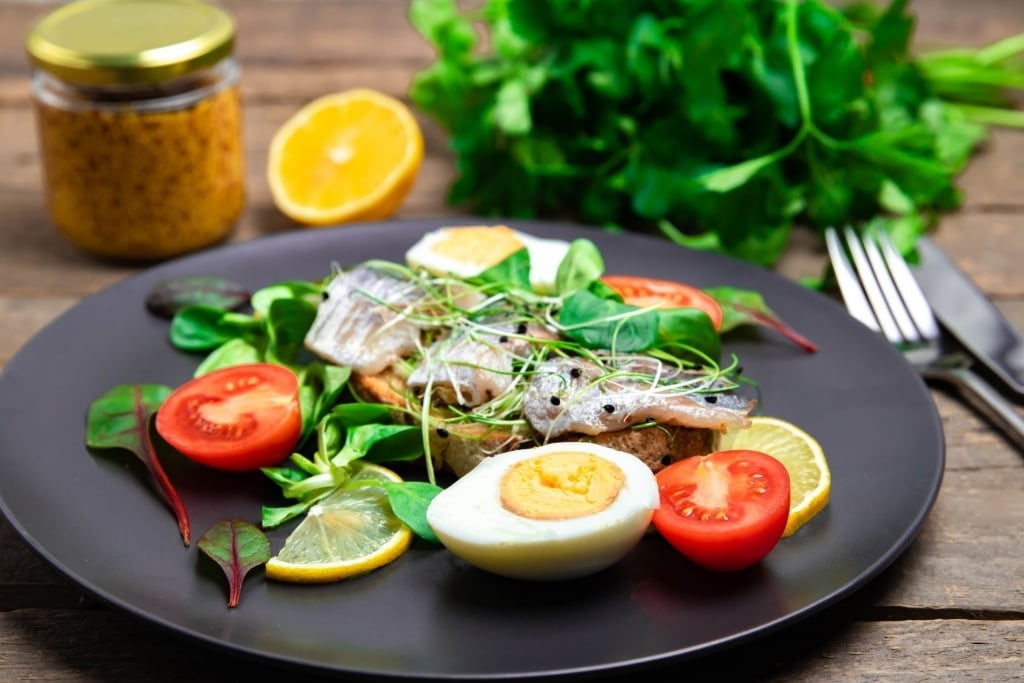
Pickled herring
While the uninitiated are sometimes daunted by herring, there’s a reason why these fish are so prized from Copenhagen to Amsterdam, two of the best food cities in Europe.
Herring have been a staple food for civilizations clustered around the Atlantic Ocean for centuries.
Their slightly oily meat is rich and flavorful, much like the best mackerel or bluefish. Nowadays, environmentalists often point out that it happens to be one of the most sustainable seafood options out there. Wild herring are abundant, reproduce quickly, and high in healthy Omega-3 fatty acids.
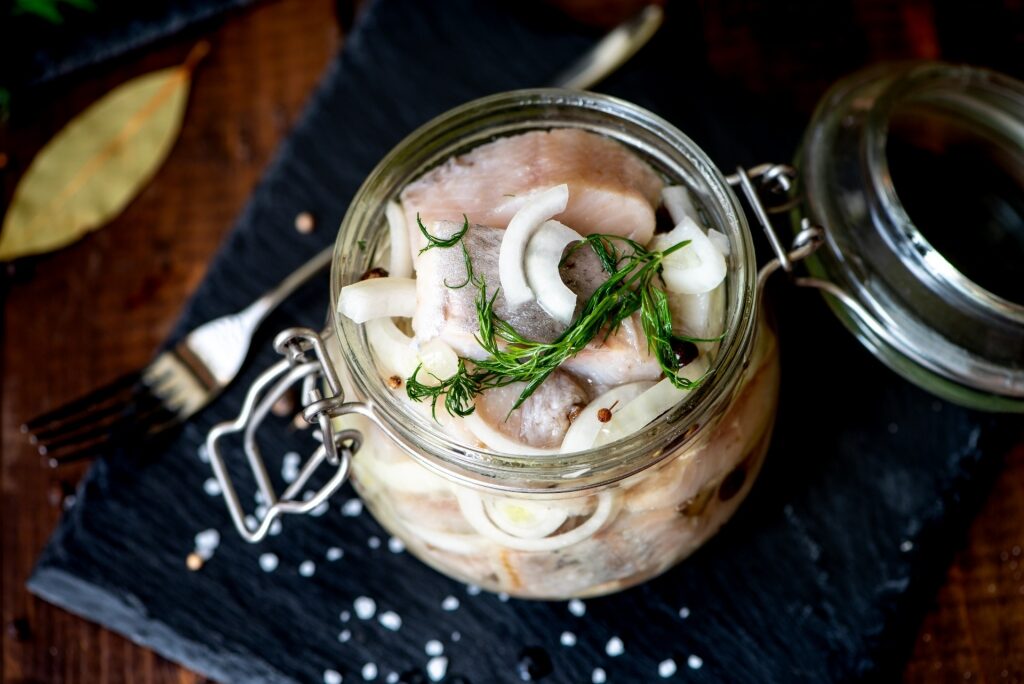
Pickled herring
They also happen to be incredibly tasty. While herring can be served raw, grilled, smoked, or just about any other way, the Danes are especially fond of eating them pickled.
When lightly cured with salt and vinegar, the meat transforms into a concentrated bomb of umami. It’s most commonly found on smørrebrød here, usually with capers, salted butter or remoulade, and chopped raw or pickled onions.
Licorice
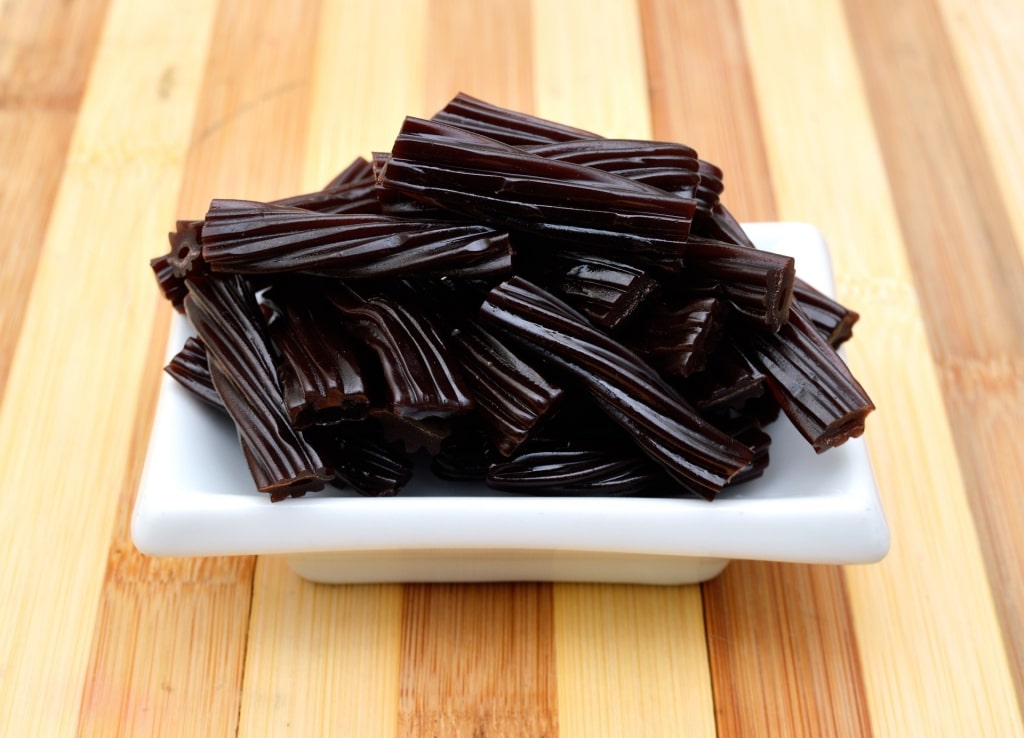
Licorice
Much like other Nordic nations—and, of course, the Dutch—the Danes are absolutely obsessed with licorice. To the uninitiated, these chewy candies made from the slightly bitter licorice root can be a bit of an acquired taste.
In Copenhagen, however, locals have really perfected the confections in both sweet and salty forms.
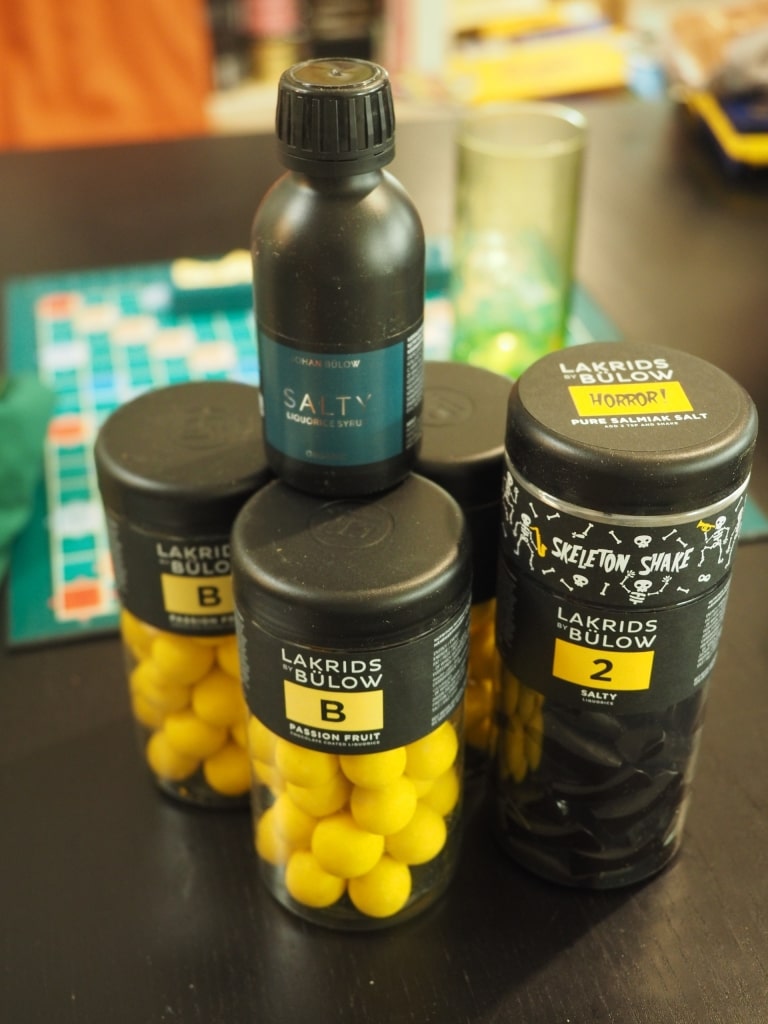
Lakrids by Bülow Photo by JIP on Wikimedia Commons, licensed under CC BY-SA 4.0
Denmark has the unusual distinction of producing some of the most potent licorice in the world and it shows up just about everywhere.
Lakrids by Bülow, the most popular national brand, makes jewel-like bonbons in flavors ranging from dark chocolate to caramel date, all of which make for great edible souvenirs.
Rød Pølse
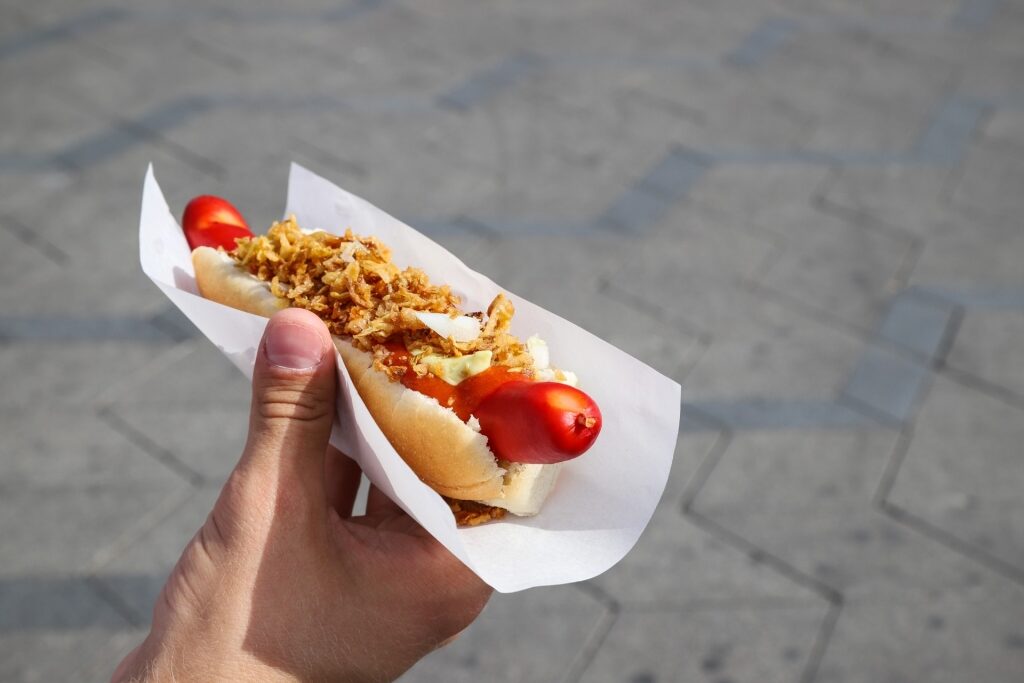
Rød pølse
Visitors to Copenhagen are often surprised to discover just how prevalent hot dogs are in the local culinary landscape. To be clear, rød pølse aren’t quite more familiar forms of the popular fast food, although the resemblance is rather striking.
These fire engine-red wieners, along with their brown, char-grilled siblings, grillpølser, have a distinctive flavor profile and snap. Spices such as nutmeg and cardamom set them apart from your standard American ballpark dog, as does the all-pork filling.
If a craving for something salty, fatty, and hot strikes, look out for a pølsevogn, one of the many sausage-vending carts that prowl the Scandinavian city at virtually all hours of the day and night.
You can order your pølse however you like, but it goes great with remoulade, mustard, Danish apple ketchup, and a showering of fried or raw onions.
Smørrebrød
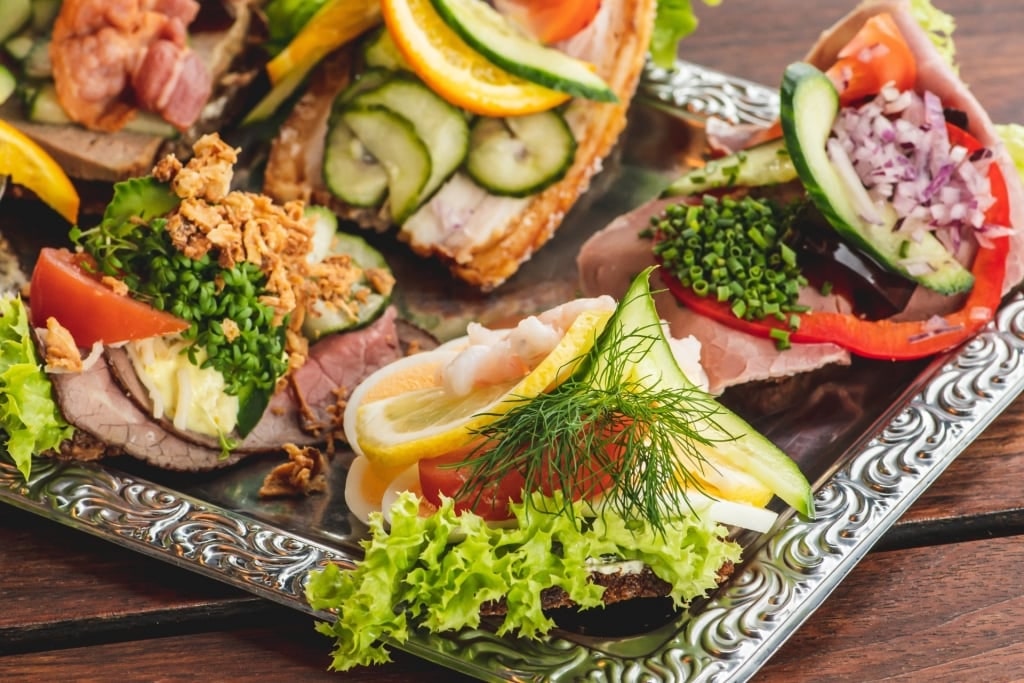
Smørrebrød
If you’ve only heard of one traditional Danish food, chances are high it’s smørrebrød. More than a specific recipe, this beloved staple is a whole way of eating for the Danes.
A smørrebrød refers to an open-faced sandwich on thin, dense, Danish rye bread. From that rudimentary definition, home cooks and chefs can go in all sorts of different directions.
The simplest examples of the genre might entail nothing more than a slick of salted butter and a pickled herring filet or two.
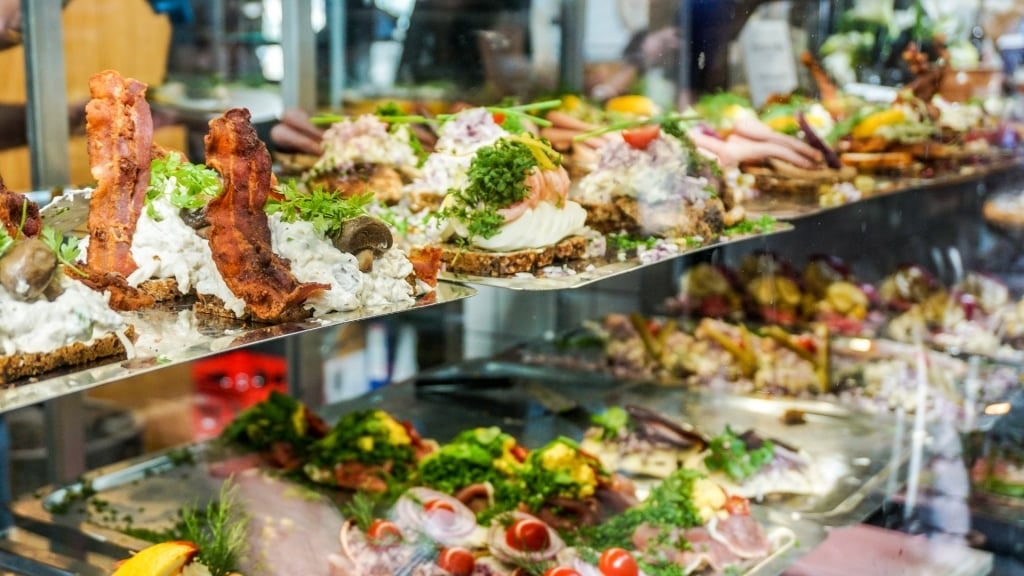
Smørrebrød
Pay a visit to any of the food halls in Copenhagen, however, and you’re likely to see all sorts of artfully decorated smørrebrød—jammy-yolked eggs and avocados, smoked salmon with fronds of dill and translucent cucumber slices, shrimp salad with capers and chopped gherkins; all manner of toppings are fair game.
This iconic European dish started out as a working-class utilitarian lunch, but now can be found at some of the fanciest tables in town. The best way to enjoy it is to order several with your dining companions.
Whatever you do, don’t try to eat this sandwich with your hands—the high ratio of toppings to bread means this is definitely fork-and-knife food.
Read: Best Things to Do in Copenhagen
Stjerneskud
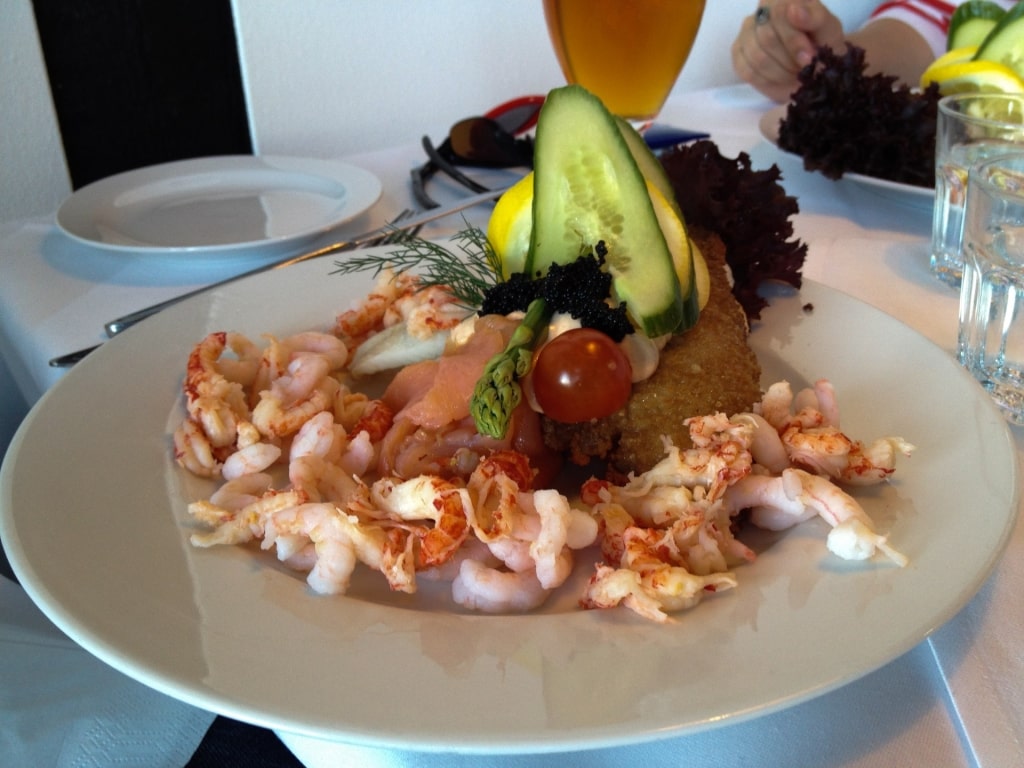
Stjerneskud Photo by David Huang on Flickr, licensed under CC BY-SA 2.0
While the open-faced sandwiches that Denmark is known for may be more famous internationally, locals have a soft spot for this other seafood-loaded sandwich.
A stjerneskud, which translates as “shooting star,” was first created in honor of astronaut Yuri Gagarin’s visit to the Danish capital by chef Ida Davidsen.
It’s a real crowd-pleaser of a sandwich, consisting of a piece of French bread—instead of the dark, Danish rye—topped with crispy fried whitefish, fresh shrimp, cucumbers, and sometimes caviar, all bound together with a creamy dressing.
Frikadeller
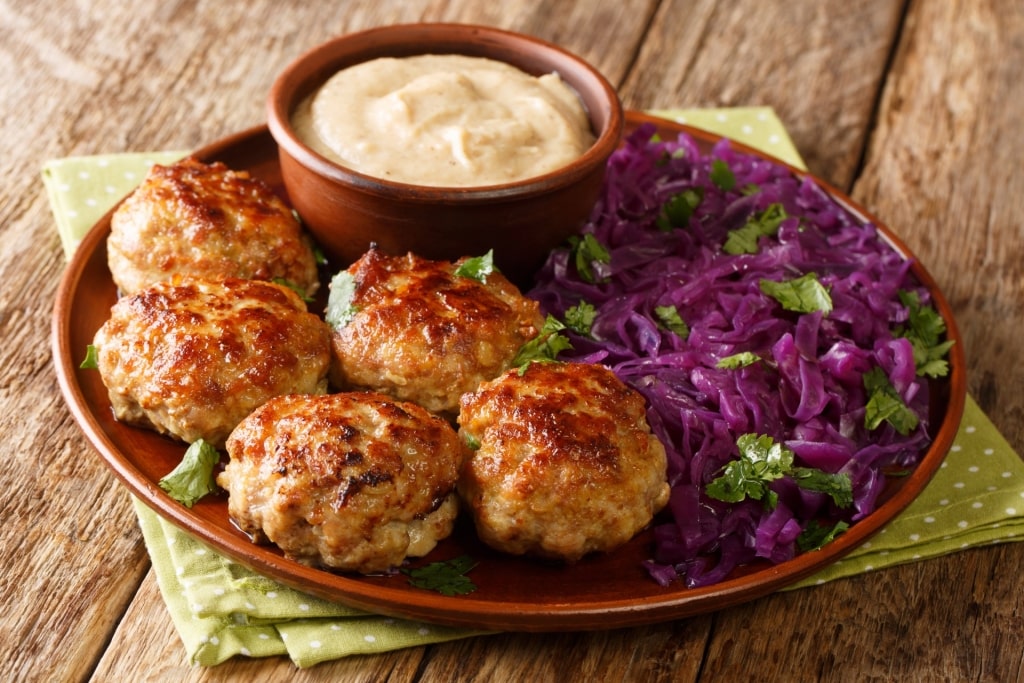
Frikadeller
Copenhagen these days may have a reputation for high-minded gastronomy, complete with extensive tasting menus, elaborate fermentation techniques, and foraged ingredients typical of the New Nordic school of cooking.
But that doesn’t mean that locals in this European capital city have forgotten all about the comfort foods with which they grew up. Frikadeller, or Danish meatballs, are supremely satisfying.
Most recipes for these are incredibly simple, consisting of ground pork or a mixture of pork and beef seasoned with nutmeg, sage, or other spices, then bound together with egg and breadcrumbs. The meatballs typically come fried and served with a pan-sauce gravy.
Fiskefrikadeller
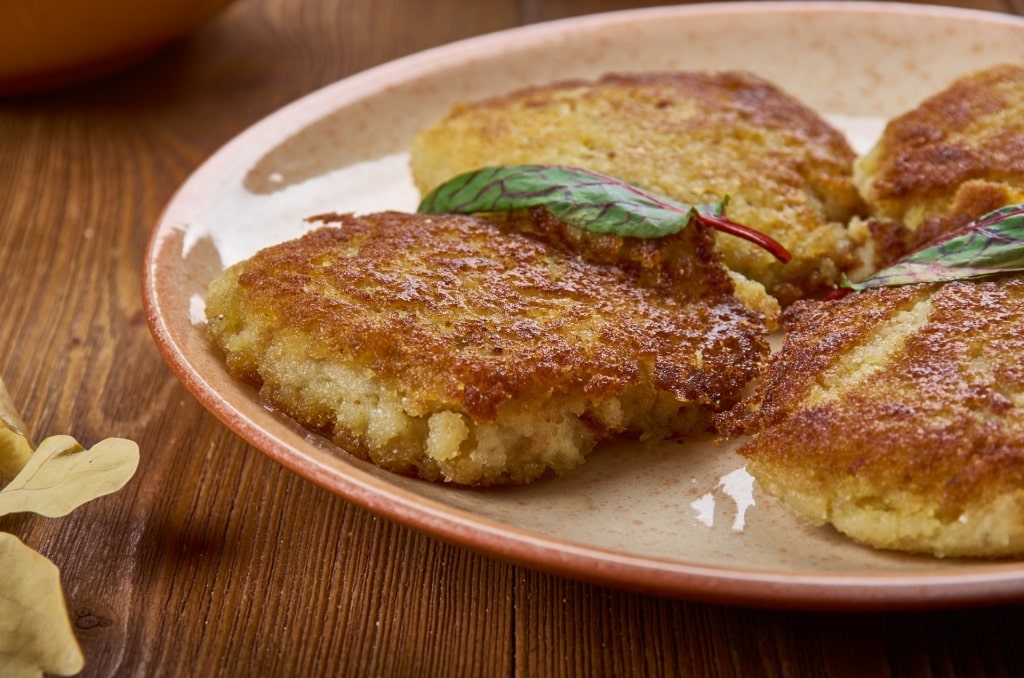
Fiskefrikadeller
Consider these the piscine equivalent to the slightly more common frikadeller. Fiskefrikadeller, or fish cakes, are usually made with cod or another widely available whitefish, then held together with egg and bread crumbs.
A savory remoulade with mayonnaise, minced cornichons, and capers, plus a squeeze of lemon, adds just the right hit of richness and brightness.
Flæskesteg
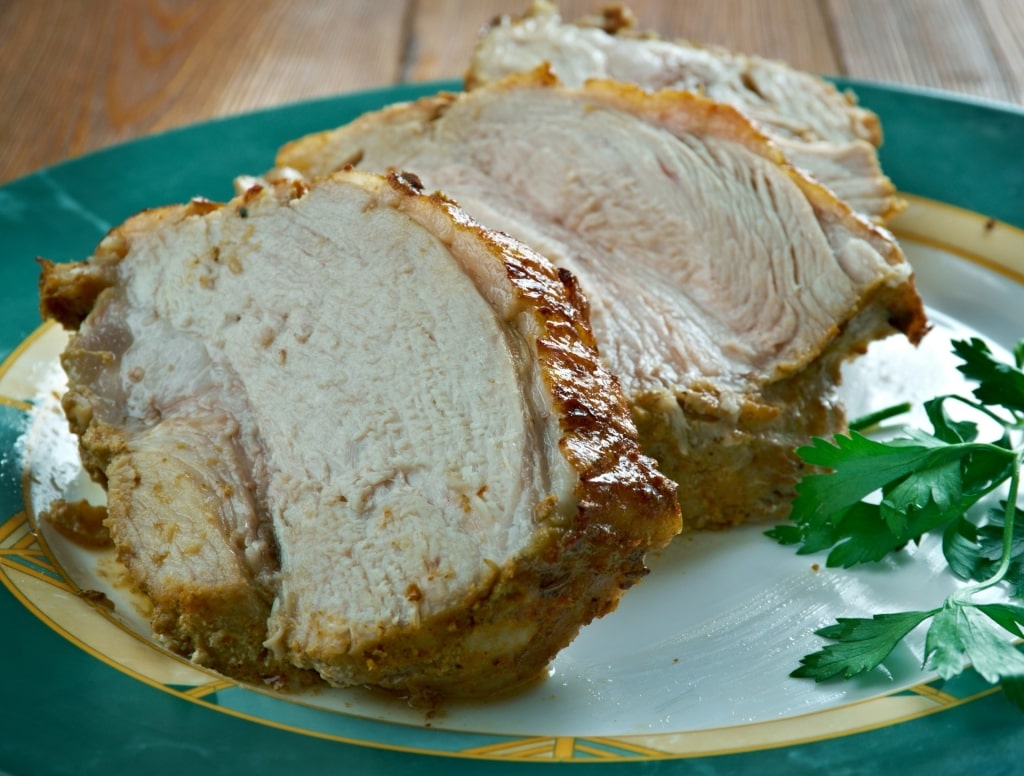
Flæskesteg
From Filipino lechon to German Schweinebraten, there are all sorts of ways around the globe to slow-roast a fatty cut of pork to perfection.
Flæskesteg is the Danish version and like many other iterations of the concept, the dish is a rich specialty associated with celebratory feasts.
This Scandinavian dish is a popular centerpiece to Christmas tables all over Copenhagen, although diners can enjoy it all year long in restaurants.
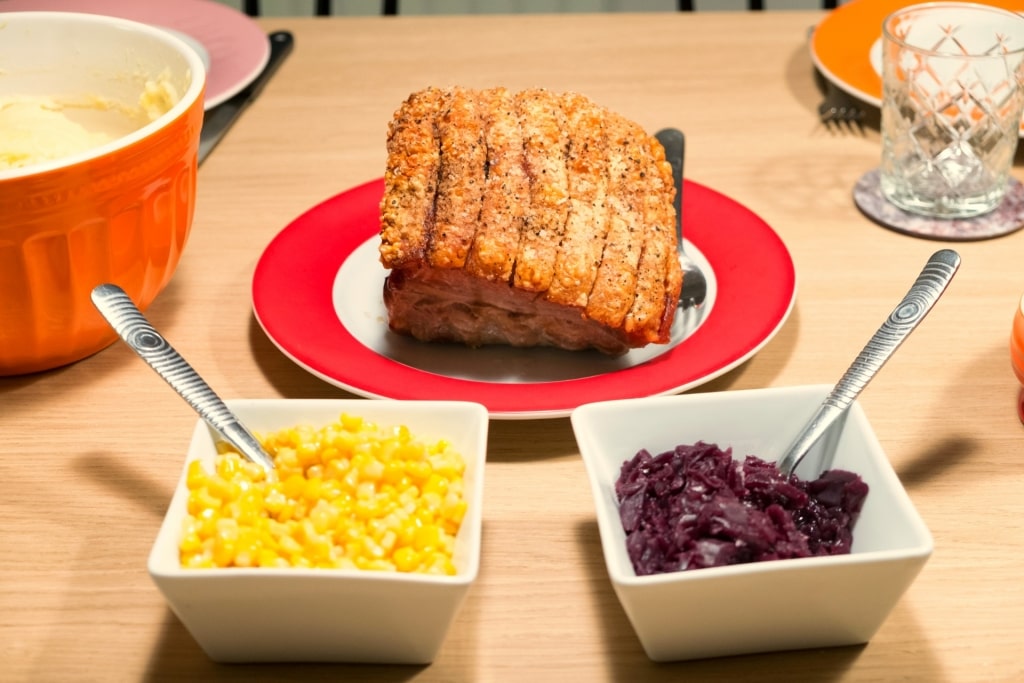
Flæskesteg
Preparing this mighty roast beast is often a lengthy affair. The cook first needs to score the thick layer of skin, then rub coarse salt, pepper, and spices all over the meat and allow it to cure for several hours or overnight.
Once the meat is fully seasoned, it’s roasted until the fat renders, the skin morphs into impossibly crunchy cracklings, and the well-marbled interior is juicy.
When a dish is this sumptuous, it doesn’t need much in the way of accompaniments. It’s traditionally the star of the show, flanked by boiled potatoes and braised or pickled red cabbage. Since home cooks inevitably have leftovers, open-face sandwiches piled with cold, thinly sliced pork the next day are a must.
Brunede Kartofler
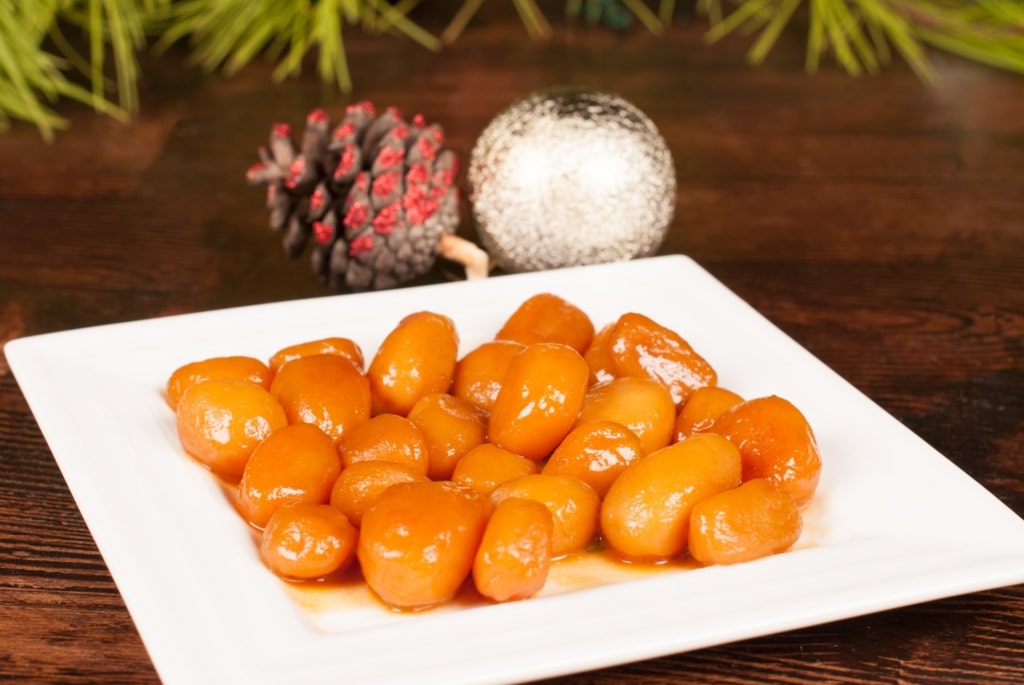
Brunede kartofler
If the thought of adding sugar to potatoes seems peculiar, that’s probably just because you haven’t tried this classic Danish celebratory dish yet. Brunede kartofler, of “caramelized potatoes,” are an essential component of many holiday table spreads in Denmark.
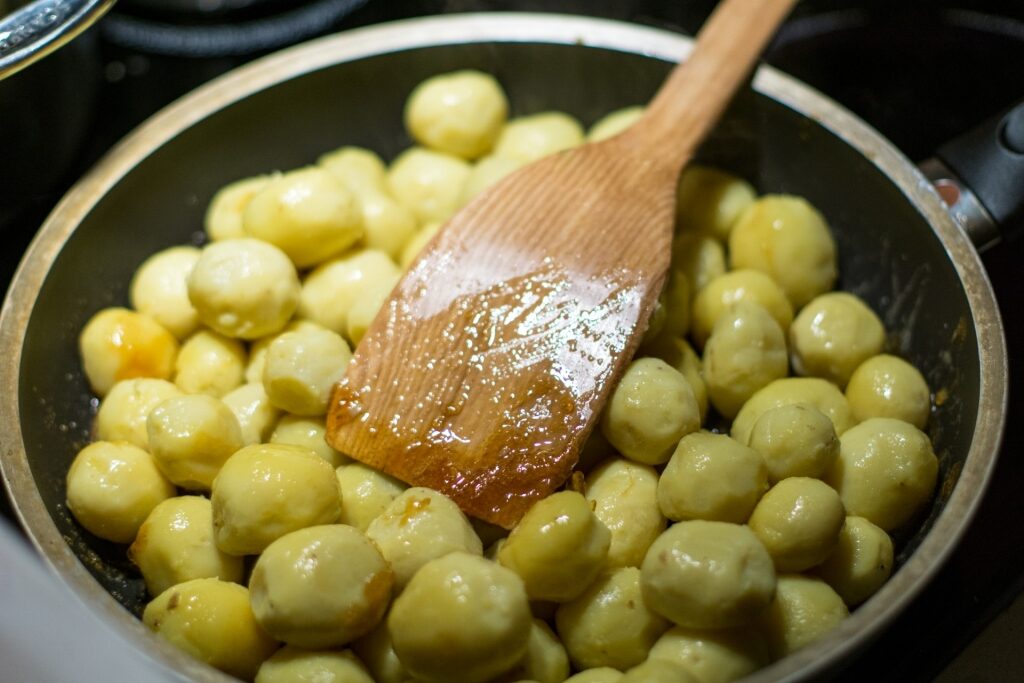
Brunede kartofler
As befitting a special occasion meal, they’re rather labor-intensive to make. Cooks caramelize sugar until it turns a deep amber shade, then add butter and toss in freshly boiled, peeled new potatoes.
After a few minutes in the skillet, the golden potatoes take on a glossy, lustrous sheen. The finished dish is both sweet and faintly bitter, with a wonderfully rounded complexity that compliments all sorts of roasted meats.
Rye Bread
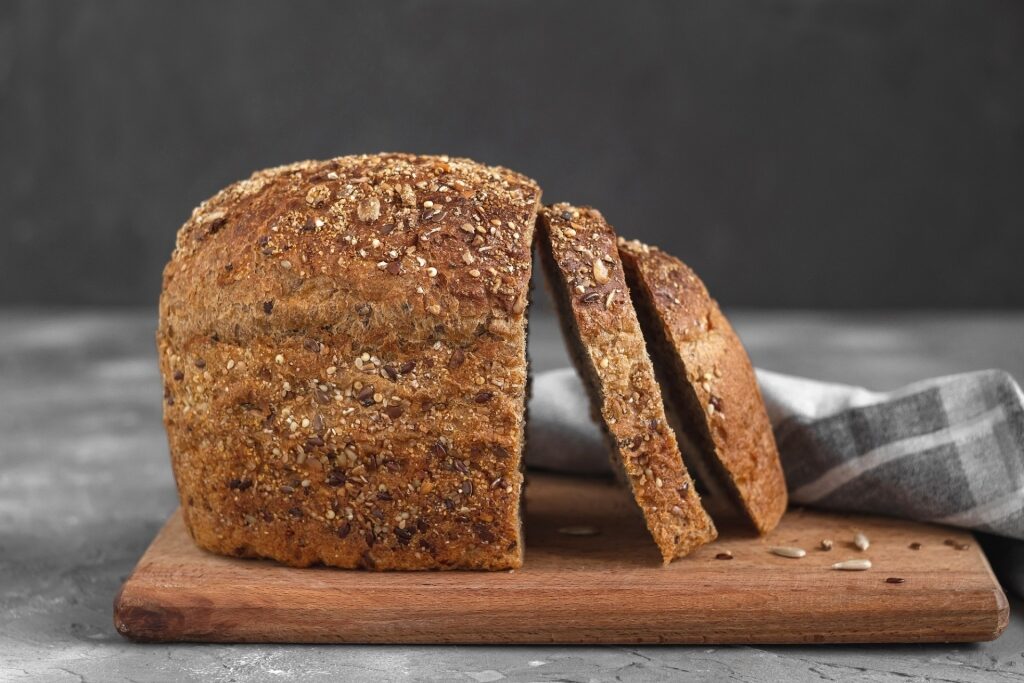
Rye bread
Copenhagen’s artisanal bakeries are formidable, offering a wide range of sourdough loaves studded with ancient grains, buttery brioches, and baguettes that would make the best bakers in Paris weep.
The general standards for carbs here are so high these days that it’s hard to order wrong. Nevertheless, rye breads in particular hold a place of special cultural prestige here.
Dense, squat, and often crammed with seeds, these sturdy loaves are a far cry from their airier cousins. What they lack in height, however, they more than make up for with their complex, satisfyingly savory notes.
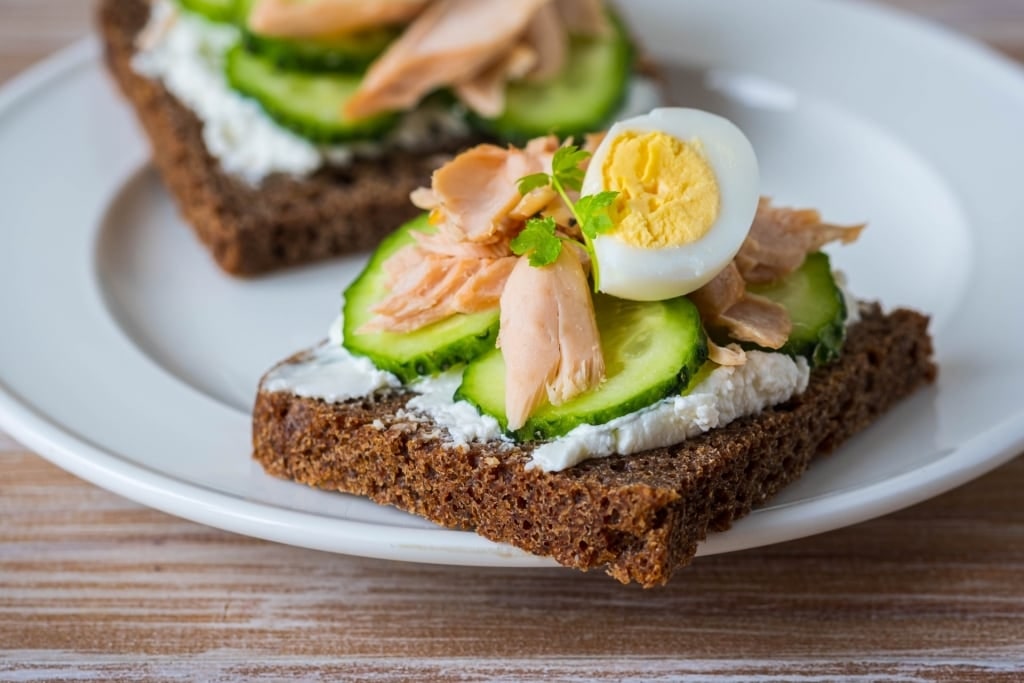
Rye bread
The secret to good rugbrød (rye bread) is a long, slow fermentation period and a sourdough starter, which allows the flavors to really develop. They’re often used as the base for smørrebrød, although they are delicious with all sorts of accompaniments.
Salmon
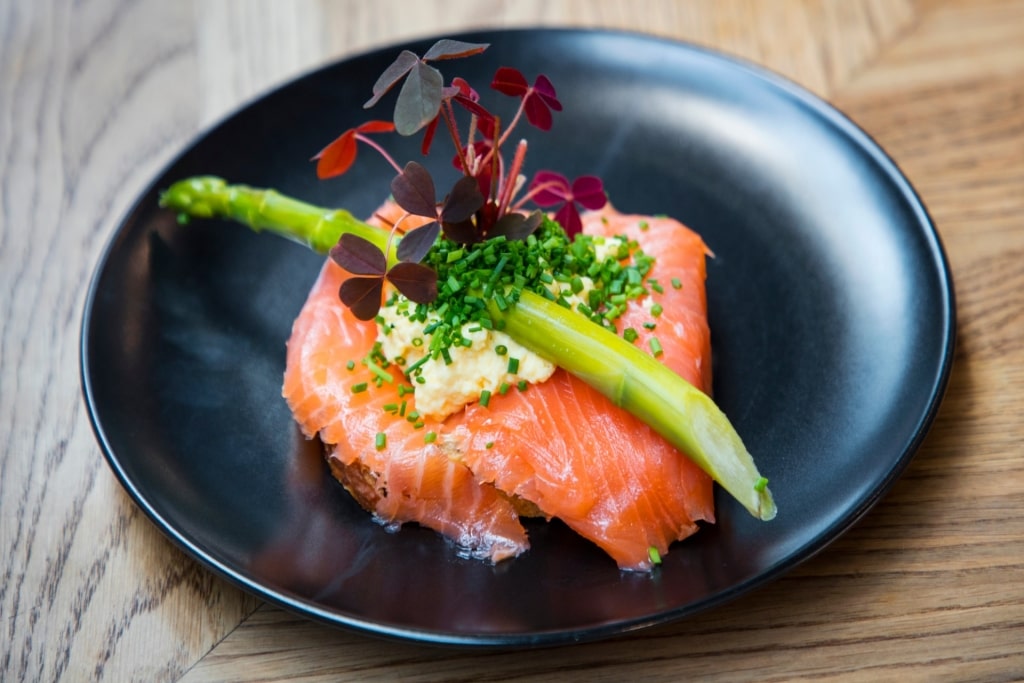
Salmon
Although wild Atlantic salmon are relatively scarce these days, Danish aquaculture produces some of the highest quality and most sustainable farmed salmon available. Beautifully marbled, high in Omega-3 fatty acids, and with a delicate sunset hue, this fish is a delicacy for a reason.
Diners can expect to find smoked salmon all over the place here, although it goes particularly well with a thin slice of dark rye bread. Meanwhile, poached, grilled, or sauted filets of salmon have places of honor at restaurants all over town.
Wienerbrød

Wienerbrød
Banish the thought of any stale, dry “Danishes” that you may have had at lackluster continental breakfasts over the years. Wienerbrød, the original Danish version of these pastries, is a dramatic cut above.
The name essentially translates to “Viennese bread,” a reference to the Austrian pâtissiers who invented or at the very least inspired it.
According to popular lore, the Danes were forced to bring in Austrian workers during a 19th-century labor strike. The Austrians, in turn, brought their own prized forms of pastry along with them.

Spandauer
Typically, the term refers to flaky, buttery pastry squares made of laminated yeast dough with a filling of blueberries or other fruit, along with a sweetened cheese filling, lemon curd, and perhaps a garnish of sliced almonds or powdered sugar.
This particular style is known as a spandauer and it’s just one of many possible iterations of these delectable treats. There’s truly no better start to your day in Copenhagen than a strong cup of coffee accompanied by one of these at a local bakery.
Rice Pudding
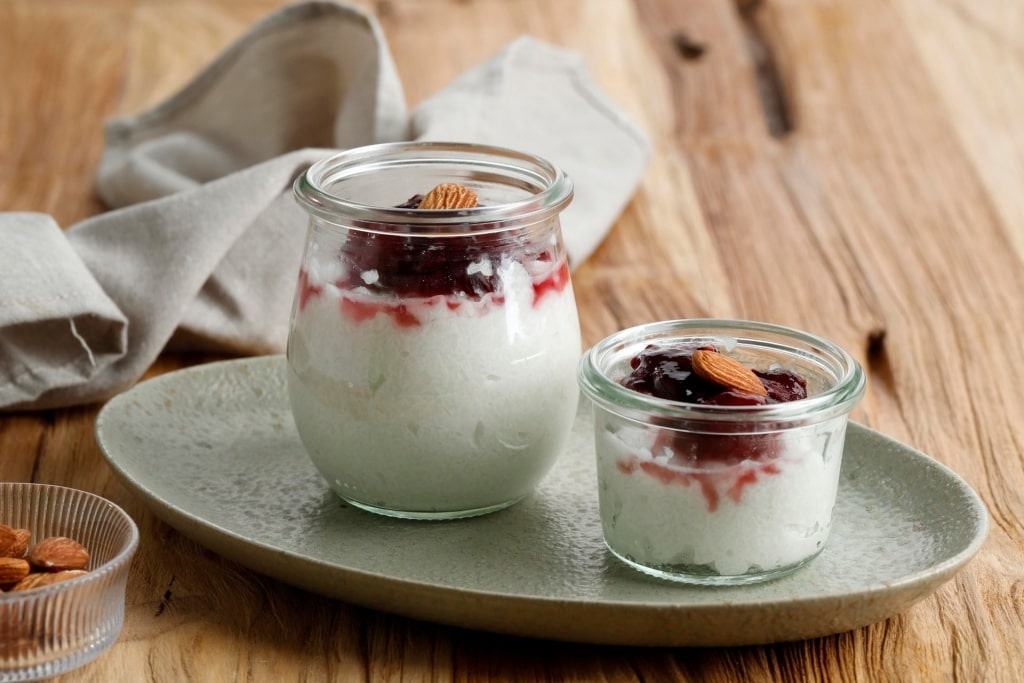
Rice pudding
Rice pudding is a comforting classic in many cultures, but it has an extra special significance for the Danes. In Copenhagen, risengrød is a Christmas dessert with a rather delightful backstory.
According to Danish mythology, troublesome sprites known as nisse are often up to no good around the holidays. Usually, these little elfish creatures stick to low-level mayhem—swiping your keys, perhaps, or messing with the local livestock.
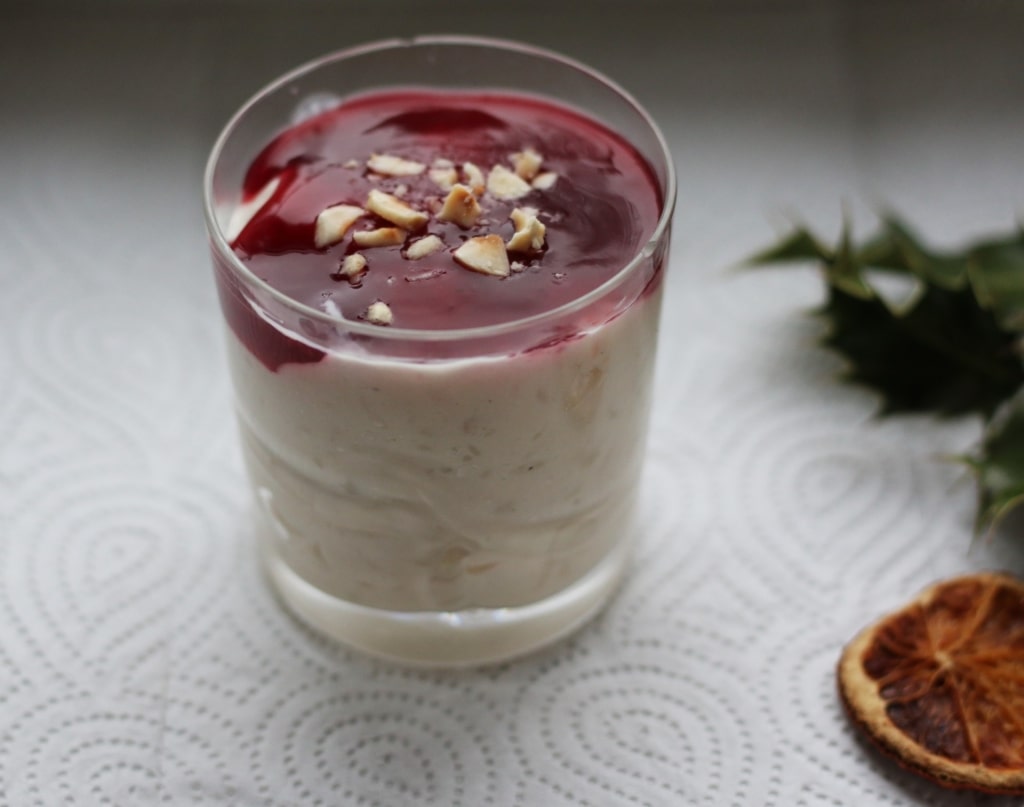
Rice pudding
In order to keep the nisse from wreaking havoc, families leave out a small dish of rice pudding as a friendly offering. Think of it as the moral equivalent of leaving a plate of warm cookies and milk for Santa. Most of the rice pudding, of course, goes to human children and their parents.
Danish rice pudding can be incredibly simple, often consisting of nothing more than white rice simmered in milk with sugar, butter, and cinnamon.
Especially around the festive season, however, families often spruce up the pudding when cold by adding vanilla beans, whipped cream, slivered almonds, and cherry sauce to make risalamande.
Aebleskivers
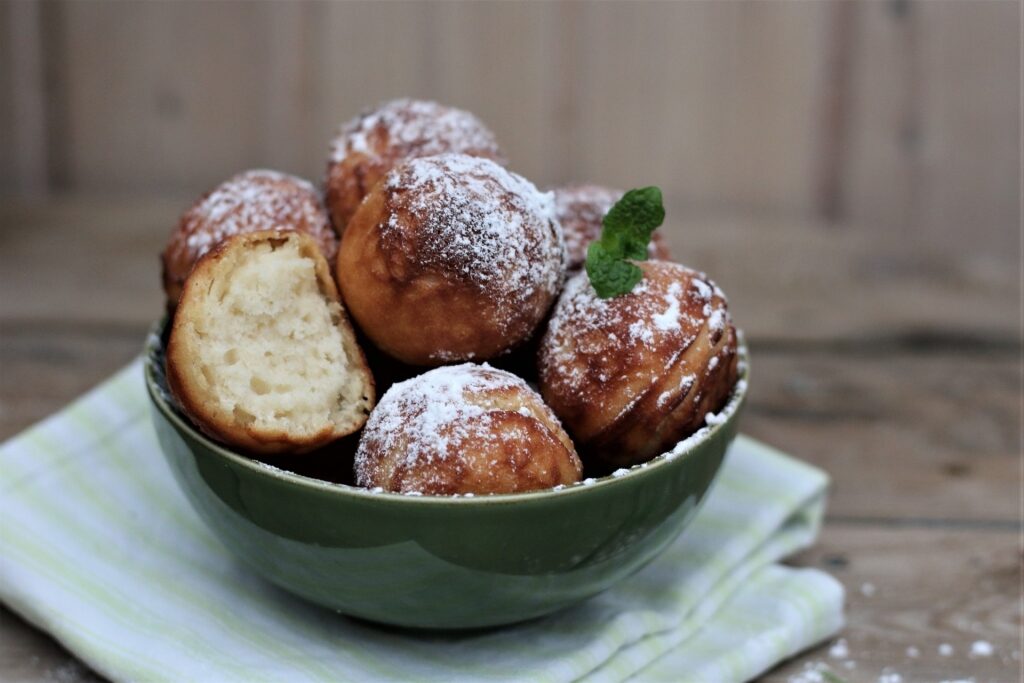
Aebleskivers
These bite-sized morsels combine the best elements of a pancake and a doughnut hole. Aebleskivers are near and dear to most Danish hearts, as they tend to be a favored treat for families to make around the holidays.
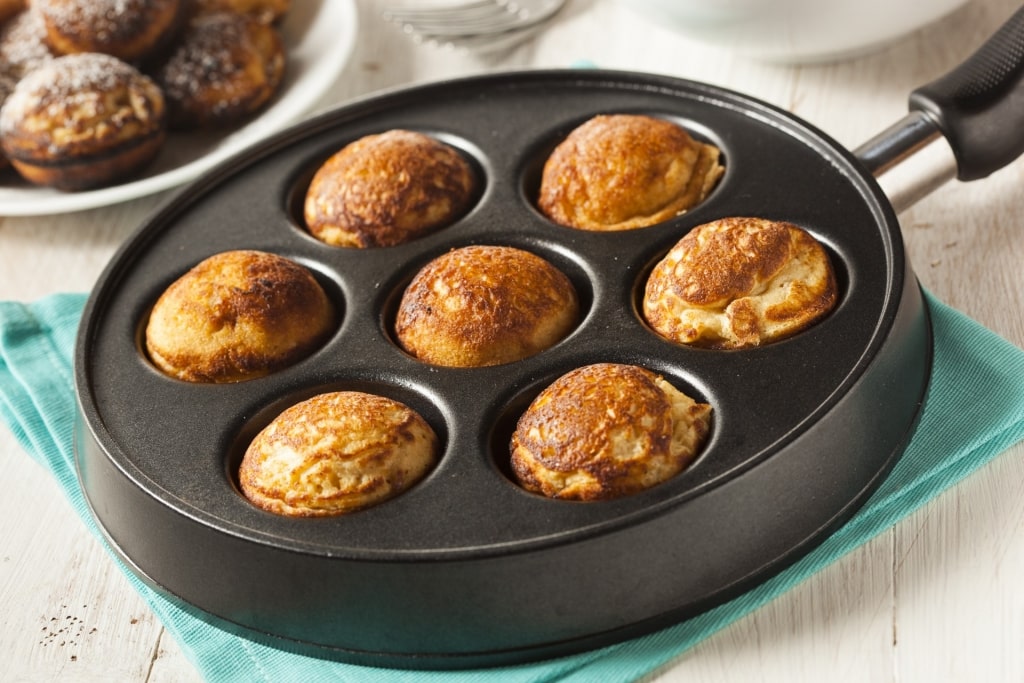
Aebleskivers
To make them, cooks drop a butter-rich batter lightened with beaten egg whites into a prepared aebleskiver pan, rotating them once to make sure each side is golden brown. The finished puffs go perfectly with various fruit preserves and jams, plus a shower of powdered sugar.
As with many classic dishes, the origins of aebleskivers are murky at best. Curiously, the name means “apple slices,” even though present-day recipes contain none.
One particularly fanciful take is that the Vikings improvised cooking pancakes by using their helmets. While it seems rather unlikely this is true, there’s no way to know. What is certain is that they’re delicious.
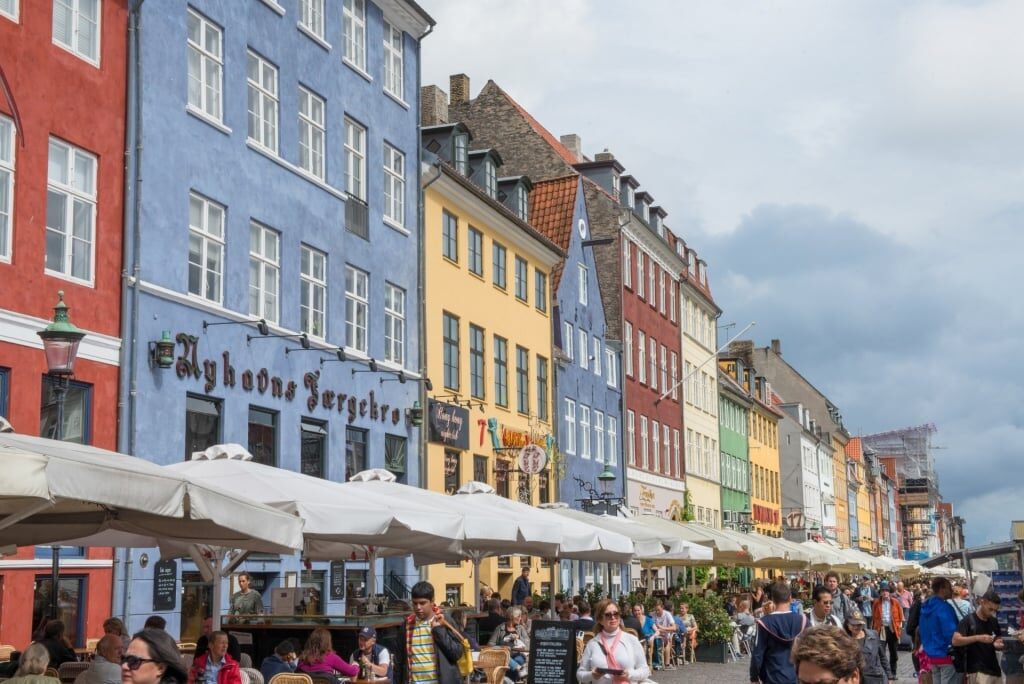
Nyhavn
Ready to enjoy the very best of Copenhagen food? A cruise makes for an ideal way to visit the Danish capital. Browse our cruises to Copenhagen and book your next voyage today.
